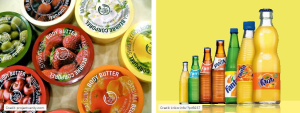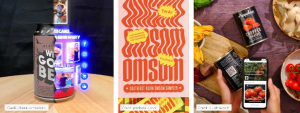This year marks the 25th year of existence for Just Design. One key lesson they’ve learned is that designing without understanding generational consumer preferences is like throwing darts in the dark.
Imagine you had a time machine. But instead of a Delorean, it was an old-school Opel Corsa. If you stepped into a supermarket in 1999, you’d notice bold, no-nonsense branding, straightforward labels and packaging that did the job without much fuss.
Previously, speaking to an audience was simpler. Now, your approach to packaging needs to speak to five generations at once. It needs to resonate with people who know what ‘skibidi’ means and those who remember filling a petrol tank for R20.
How consumer packaging needs have evolved over the years:
The ’90s: Practical And Familiar
In the ’90s, Gen X dominated, and packaging was straightforward, focusing on reliability and trust. Brands like Coca-Cola and Oros used simple, recognisable designs. Plastic ruled packaging and the environment wasn’t yet a concern as the focus was on protecting the product and ensuring shelf appeal.
The 2000s: Expressive And Experimental
As Millennials began to shape the market, packaging became more expressive. Typography, bold colours, and a focus on brand personality took centre stage. Brands like Castle Lager and The Body Shop led the way, experimenting with eco-friendly messaging and interactive design features like pull-tabs and resealable pouches.

The 2010s: Sustainability And Social Media Appeal
With the rise of Gen Z, packaging became Instagram-worthy, interactive, and eco-conscious. Brands like Nando’s embraced playful designs and tongue-in-cheek wording, while others, like Woolworths, focused on transparency and eco-consciousness. The move towards minimalism took hold, and limited-edition packs became popular.
The 2020s: Minimalism With Impact
Today, packaging emphasises clean design, storytelling and responsibility. Premium aesthetics are more common and sustainable materials are now commonplace. Brands that don’t meet consumer values are being rejected, and reusable or biodegradable materials are on the rise.
Looking Ahead: Gen Alpha’s Influence
Gen Alpha, those born after 2010, are shaping the next generation of packaging. Raised in a digital world, they expect interactivity and a sense of ecological responsibility. Smart packaging, augmented reality (AR), and hyper-personalised designs will define the next wave of trends. Eco-consciousness is at the forefront, with biodegradable and plastic-free packaging becoming non-negotiable.
Why This Matters
Each age group has distinct expectations, values and purchasing behaviours that influence how brands present their products. These need to be reflected in the packaging unless you want to risk refusal at the purchasing decision – or worse: you aren’t even considered an option.
Baby Boomers value trust, tradition, and clarity. Packaging should be familiar and easy to read, with eco-friendly features that don’t compromise quality.
Gen X look for practicality with a touch of modernity. They prefer functional packaging with a refined design and are open to being eco-conscious as long as it doesn’t sacrifice usability.
Millennials want packaging that tells a story and aligns with their values. They’re drawn to unique, experiential designs, like those from craft beer brands, and appreciate eco-friendly features.
Gen Z seek bold, digital, and socially responsible packaging. Customisation, interactivity (QR codes, AR), and being green are key for this group.

New Challenge For Brands:
Designing solutions that target a specific audience is nothing new. But it takes insight, experience and creativity to get it right for multiple generations, simultaneously.
Partnering with an agency that has been around the block and is driven by consumer insight should be a no-brainer. What the last 25 years have shown us is that the most successful projects are the ones that are carefully crafted to appeal to many generations; where every consumer insight translates into visual elements that can constantly adapt, embrace new materials, showcase digital innovations and tell brand stories.
JUST DESIGN
https://www.justdesign.co.za










